Category: Study Materials
-

Golgi Apparatus: Definition, Function, & Examples
Continue ReadingGolgi Apparatus Definition
Golgi Apparatus is involved in the packing of proteins and other molecules for secretion, modifying proteins through processes like glycosylation. These membrane-bound stacks are responsible for the production of lysosomes.
What is Golgi Apparatus?
The Golgi apparatus was discovered by an Italian physician Camilo Golgi in 1898. It is a part of the GERL complex and is present in eukaryotic organisms. It is also known as dictyosomes in plants and as the parabasal body in flagellate protozoa. All the Golgi apparatus of a cell is together termed as Golgi complex.

The membranous stacks of Golgi are cisternae that have their origin from the Endoplasmic Reticulum in form of vesicles. The stacks of cisternae in the case of mammals range from 40 to 100. The flattened and fused cisternae comprise stacks that often have microtubule connections in between them.
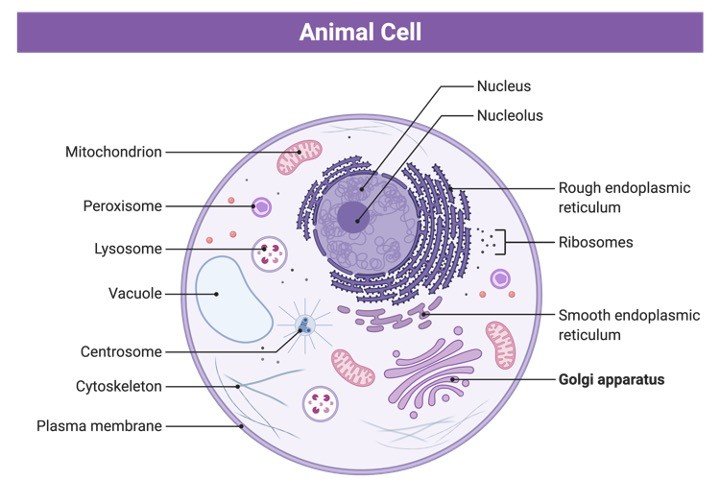
If these interconnecting tubules are removed then now the organelles consist of only individual disks. In plants, the microtubules in stacks are replaced by actin and its location in a cell varies.

It is found proximal to the nucleus especially in the centrosomal region in mammals. Unlike mammals, plants, are not concentrated in any specific region. The usual location of Golgi is near ER exit sites in almost all eukaryotic cells. The cisternal stack has 2 faces: a cis (entry face) and a trans face (exit face). Different enzymes are present in these 2 faces.
In the case of cis face, early modification enzymes are present while in the trans face of cisternae the enzymes required for the final processing of proteins are present. These enzymes are anchored to the membrane, whereas in ER they are anchored in the lumen.
Golgi Apparatus Function
The Golgi organelle is responsible for processing steps like glycosylation, packaging molecules into vesicles, production of lysosomes, and transport of lipids. In glycosylation, sugar monomers are attached to proteins in a series of steps.
Golgi Apparatus sorts the proteins emerging from ER and packs and tags them so that they can be allocated to their destinations.
The modified and tagged glycoprotein is packaged in form of vesicles for transport. They can be stored in form of vesicles for later use in the cell itself as in lysosomes.
Cells that have a secretory function have more Golgi apparatus and they are also larger in these mammalian cells. For instance in plasma B cells play a crucial role in secreting antibodies.
Biological Importance of Golgi Apparatus
The endoplasmic reticulum secretes proteins in form of vesicles for transport to Golgi where they are further modified. For instance, the oligosaccharides on lysosomal proteins are phosphorylated in cis cisternae of Golgi where the mannose residues are also removed. N-acetylglucosamine is added in the mid-cisternae stack.
In trans face, sialic acid and galactose are added. Other processes like sulfation of carbohydrates and tyrosines also occur here. Proteins are also tagged here to specify their destinations. For example, the proteins destined for the lysosome are labelled with mannose-6-phosphate.
The protein that is secreted by RER is enclosed in vesicles and transported to Golgi for maturation. The vesicles containing properly folded proteins pinch off from ER in this process.
They are then transported via cytoskeletons to the cis face for post-translational modifications. The vesicle fuses with Golgi and empties its contents into its lumen. Here the protein is processed, tagged with a signal sequence, and packed for export.
If the vesicle is to be exported to the extracellular space then it will fuse to the cell membrane for constitutive secretion. These vesicles fuse when they receive a signal, till then they are transiently stored. This process is termed as regulated secretion as in neurotransmitters released by neurons.
For hydrolytic enzymes like proteases, the vesicles are first shuttled to late endosomes and then transported to the lysosome.
Golgi Apparatus Citations
- Golgi Apparatus: An Emerging Platform for Innate Immunity. Trends Cell Biol . 2020 Jun;30(6):467-477.
- The Golgi apparatus and cell polarity: Roles of the cytoskeleton, the Golgi matrix, and Golgi membranes. Curr Opin Cell Biol . 2020 Feb;62:104-113.
- Form and function of the Golgi apparatus: scaffolds, cytoskeleton and signalling. FEBS Lett . 2019 Sep;593(17):2289-2305.
- Direct trafficking pathways from the Golgi apparatus to the plasma membrane. Semin Cell Dev Biol . 2020 Nov;107:112-125.
- Images are created with BioRender.com.
Share
Similar Post:
-

Sarcoplasmic Reticulum: Definition, Function, & Examples
Continue ReadingSarcoplasmic Reticulum Definition
Sarcoplasmic Reticulum is a smooth endoplasmic reticulum type found in striated and smooth muscles that are reserves of calcium ions.
What is Sarcoplasmic Reticulum?
The endoplasmic reticulum (ER) occurs as an interlinked network of flattened sacs in the cytoplasm. The membrane extensions of the organelle are connected to the outer nuclear envelope and also extend into the plasma membrane.
The ER is of two types based on their appearance: the rough endoplasmic reticulum (RER) and the smooth endoplasmic reticulum (SER). RER has ribosomes on their surface while SER lacks them. Sarcoplasmic reticulum refers to specialized SER found in muscle cells.
Sarcoplasmic Reticulum Characteristics
The sarcoplasmic reticulum is present in myocytes as a membrane-bound network of tubules surrounding the myofibrils abounds in the myocyte. Sarcoplasmic Reticulum is located proximal to the transverse tubules in cardiac and skeletal muscle cells. A triad is formed by the union of the sarcolemma that is an extension of the cell membrane and components of Sarcoplasmic Reticulum.
Terminal cisternae are formed by the close association of parts of Sarcoplasmic Reticulum with transverse tubules. It is the primary site responsible for calcium release in the muscle cell.
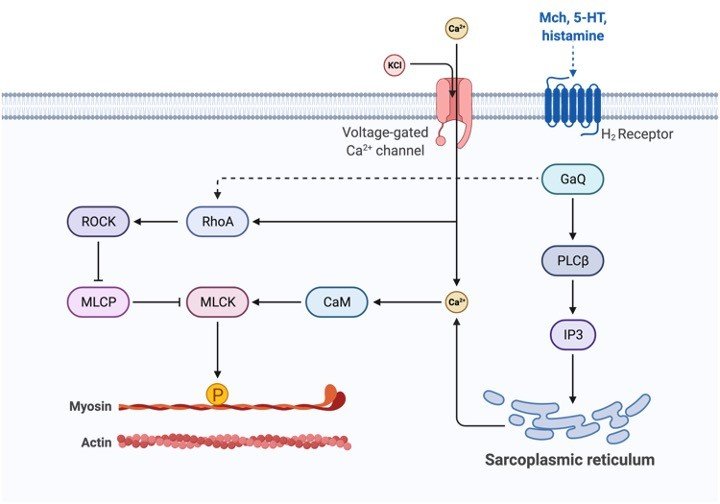
Sarcoplasmic Reticulum has ion channel pumps that help in an influx of calcium ions present on the membrane. These pumps are termed SERCA and consist of 13 subunits. For Sarcoplasmic Reticulum to carry out the role of absorbing calcium ions, it has ion channel pumps in its membrane.
These calcium pumps in the Sarcoplasmic Reticulum are called SERCA and consist of 13 sub-units (M1-M10, N, P, and A). Some subunits are located outside (Eg: N, P, and A) while the rest is present inside the membrane.
ATP binds to the extracellular subunit while Calcium ions bind to the intracellular subunits. SERCA2a is generally found in muscle cells.
Calsequestrin binds to calcium and helps in its storage. This protein is located in terminal cisternae and can bind to 50 Calcium ions at a time. Ryanodine receptors (RyRs) help in the release of calcium ions via Sarcoplasmic Reticulum. The most common receptor is RyR3 present in the brain, while RyR2 is located in cardiac muscles. RyR1 is seen in skeletal muscles.
Sarcoplasmic Reticulum Functions
The Sarcoplasmic Reticulum is crucial for the contraction of myofibrils and functions in the absorption, storage, and release of calcium ions. These ions are released when muscles contract while in the relaxation phase they are absorbed.
Calcium levels need to be regulated to maintain homeostasis. A maintained increase in calcium levels can cause hardening, calcification, and even cell death. The calcium levels are kept constant through Sarcoplasmic Reticulum. As it concentrates the calcium ions inside, it decreases its intracellular levels.
Importance of Sarcoplasmic Reticulum
Calcium ion channel pumps ions into Sarcoplasmic Reticulum utilizing active transport as this is against the concentration gradient. Calcium is taken in when ATP along with 2 calcium ions binds to the cytosolic side of the pump.
The hydrolysis of ATP causes structural alterations of the pump. This leads to the opening of the channel through which the calcium ions pass through into the Sarcoplasmic Reticulum.
The calcium ions are released through the activation of RyR receptors at the terminal cisternae. This causes a surge in ion concentration causes calcium spark that can be spontaneous or evoked.
Calcium-induced calcium release is a mechanism for triggering calcium release. An action potential alters the shape of dihydropyridine receptors resulting in the opening of a calcium ion channel.
The resulting influx leads to the binding of calcium ions to RyR. This receptor is activated on binding with 4 calcium ions and this leads to calcium release. This results in the evoked calcium spark and is observed in the case of smooth and cardiac muscles.
In the case of skeletal muscle, RyR receptors open directly when dihydropyridine receptors change and open, and thus, this occurs without prior flooding of calcium ions. Both kinds of receptors are in proximity to each other, such that any change in dihydropyridine receptor shape triggers RyRs.
In cardiac and smooth muscles, the dihydropyridine receptors are not directly in contact with RyR, and hence calcium ion flooding and binding occurs is prerequisite for the release of calcium.
If no sort of action potentials are required for calcium release, then it is termed a spontaneous calcium spark. This mechanism is dependent on the high calcium ion concentration inside the SR.
The RyR opens by either direct binding of calcium ions or the detachment of calsequestrin from the receptor. If the concentration of calcium ions is low, then calsequestrin inhibits the opening of RyR by binding to it.
Sarcoplasmic Reticulum Citations
- Sarcoplasmic reticulum-mitochondria communication in cardiovascular pathophysiology. Nat Rev Cardiol . 2017 Jun;14(6):342-360.
- The sarcoplasmic reticulum and SERCA: a nexus for muscular adaptive thermogenesis. Appl Physiol Nutr Metab . 2020 Jan;45(1):1-10.
- Sarcoplasmic reticulum and calcium signaling in muscle cells: Homeostasis and disease. Int Rev Cell Mol Biol . 2020;350:197-264.
- Images created with BioRender.com
Share
Similar Post:
-

Trehalose: Definition, Function, & Examples
Continue ReadingTrehalose Definition
Trehalose consists of α-glucose molecules that form disaccharides and is a source of energy for organisms like fungi, plants, invertebrates, and bacteria.
What is Trehalose?
Carbohydrates are a sub-class of biomolecules that is categorized depending on the number of saccharide constituents. When 2 monosaccharides are linked by a glycosidic linkage they form a disaccharide i.e., a carbohydrate an example of a disaccharide is trehalose.
Trehalose History
It was H. A. L. Wiggers in 1832 who discovered trehalose in ergot of rye. But the name of this disaccharide was given in 1859 by Marcellin Berthelot based on its source trehala, which was extracted from the weevil’s pupal case.
Trehalose Properties
The monosaccharides in trehalose are linked by 1-1 α-glycosidic linkage. It has a white crystalline appearance and it is also known as α-D-glucopyranosyl-(1→1)-α-D-glucopyranoside and has a formula C12H22O11.
In terms of its components i.e., saccharides it is similar to maltose as it is comprised of 2 glucose units. But, maltose differs with respect to the glycosidic bond, it has α-1→4 glycosidic linkages.
Unlike trehalose where this bond occurs between C-1 of either glucose, on maltose the linkage occurs between C-4 and C-1. If the glycosidic linkage between 2 glucose units is β-(1→4), then they form cellobiose whereas if the linkage is α-(1→6) then isomaltose is formed. Unlike trehalose, maltose is a reducing sugar.
The closed ring structure in trehalose is due to the glycosidic bond between glucose units. Due to this, it is resistant to acid hydrolysis as the aldehyde or the ketone ends cannot bond with lysine or arginine of proteins.
This disaccharide is also stable at high temperatures and in acidic conditions. As it is an energy source and also has high retention trait organisms can endure long dry or freezing situations.
Trehalose Biosynthesis
The only anomer of trehalose is α,α-trehalose, and is naturally utilized by different organisms as an energy source. These organisms have inherent pathways and enzymes required to produce this disaccharide biosynthetically. One general metabolic pathway requires a trehalose-phosphate synthase enzyme.
From UDP-glucose the glucose unit is transferred to glucose-6-phosphate and the reaction is catalyzed by trehalose-phosphate synthase to produce threlaose-6-phosphate and UDP. Then, trehalose-P phosphatase catalyzes the dephosphorylation of trehaloses-phosphate.
Trehalose via trehalase enzyme is broken down into glucose units that provide energy in organisms like insects for flight. In the case of higher animals including humans, this reaction is catalyzed by α-glucosidase trehalase that is present in the brush border of cells of the intestinal mucosa.
Biological Importance of Trehalose
This natural disaccharide is biosynthesized in organisms like invertebrates, fungi, and plants. In these organisms, it acts as both the source of carbon and energy. It not only provides a fast energy source but also forms a structural entity in the cell walls of certain organisms and acts as an osmoprotectant.
Plants like Selaginella can survive long periods of dehydration, desiccation, oxidative stress, and heat by utilizing trehalose. During the dry spells it shrinks into a brown ball-like shape but on contact with moisture resumes growth. This phenomenon of resurrection is referred to as poikilohydric.
In omnivores and herbivores, sources like mushrooms, shellfish, and starchy food can deliver trehalose. This is broken down by trehalose that attacks the glycosidic linkage.
It can also be produced synthetically for commercial purposes to produce drugs, food, frozen foods, and cosmetics. In frozen foods like ice cream, this is added as an ingredient to decrease the freezing point of food.
It can also be used as an artificial sweetener as it does not cause a spike in glucose levels in the blood. It also promotes the growth of gut microbes like Clostridium difficile so consumption beyond the required amount is not advised.
Certain toxins are also released as a result of trehalose metabolism. Inborn error of metabolism Trehalase deficiency is a rare metabolic condition in the case of humans where the enzyme is not sufficiently produced and as a result, it accumulates.
It can lead to diarrhea and abdominal discomfort when ingesting dietary trehalose. This deficiency can result due to mutation in the TREH gene.
Trehalose Citations
Share
Similar Post:
-

Polyols: Definition, Function, & Examples
Continue ReadingPolyols
Polyols are primarily organic alcohol that has multiple hydroxyl groups. The name polyol is comprised of 2 terms, “poly” refers to multiple and –“ol” indicates alcohol group.
What are Polyols?
Polyols like other organic compounds comprise C-C and C-H covalent chemical bonds. Sugar alcohols are a group of polyols that are derived from sugars produced naturally or synthetically. Even though they are formed by the hydrogenation of sugars, they are not true sugars.
Sugars are comprised of monosaccharides and disaccharides having a formula Cn (H2O) n, where n may range from 3 – 7.
The group sugar alcohols are similar in structure to sugars except for the fact that they have additional hydroxyl groups and have the formula (CHOH)nH2. They are less sweet and can act as an energy source.
Polyols Pathway
Glucose is converted into fructose in the polyol pathway through a biological process. In this pathway, glucose is first reduced to polyol sorbitol that is oxidized to fructose. The first reaction is catalyzed by aldose reductase whereas the oxidation of sorbitol occurs in presence of the enzyme sorbitol dehydrogenase.
This pathway also employs cofactors, NADPH and NAD+. Dysfunctions in this pathway can lead to microvascular damage to kidney cells, retina, or nerves that are insulin-independent leading to type-II diabetes complications.
If glucose has not been phosphorylated by hexokinase then instead of the glycolytic pathway, it enters the polyol pathway where it is converted to fructose.
This occurs when there is a surplus of glucose due to which enzyme hexokinase becomes saturated and the excess glucose is diverted to the polyol pathway instead. Here it is reduced sorbitol and utilizes NADPH and NAD+.
These co-factors become less available for other significant pathways and metabolic reactions like glutathione and nitric oxide production. It also increases free radical oxygen species which can be damaged cells.
Biological Importance of Polyols
The most important function of polyols is to provide an energy source and it is involved in the polyol pathway where glucose is reduced. In this pathway, excess glucose is reduced to fructose which is required for processes like glycation and fructolysis.
Natural polyols occur naturally in fruits like apples, prunes, peaches, and in prunes, in forms like sugar alcohol sorbitol. Another naturally occurring polyol is found in bacterial cell walls as sugar alcohol ribitol.
Polyols may also act to maintain high intracellular osmolality as osmolytes in the kidney cells of higher organisms; some also act as antifreeze molecules.
Artificially polyols can be synthesized starch and sugar. They are used commercially as an alternative for sugar or as additives. They are employed in food products that are categorized as having no sugar content or low calorie. These sugar sorbitols except erythritol provide about 2.4 kilocalories/g.
They are not labeled as essential nutrients. But for diabetic patients, it can help them in regulating glucose levels in the blood. They can also act as a substitute for sucrose that is also a natural sugar. It is synthesized by plants like beets and sugarcane.
It is extracted from these sources and commercially processed as sugars utilized in various preparations. But unlike polyols, it is an essential carbohydrate that provides both fructose and glucose.
One of their disadvantages is that it has a high GI index of 65 when compared to sugar alcohols that have a GI of less than 10.2. GI of glucose is 100, while fructose has a GI of 25.
A high glycemic index is not preferred as it means that the substance can cause a substantial peak in blood glucose levels as in conditions of obesity and diabetes mellitus.
Sugar alcohols with a low GI are preferred and they do not promote tooth decay as they are not metabolized by mouth oral microbes. They are used commercially in the production of medicinal syrups, lozenges, and toothpaste as they do not produce any sort of acids that might trigger tooth decay.
One of their downsides is that they are poorly digestible which can lead to irritation and increased fermentation by gut microbe leading to bloating, flatulence, and diarrhea. These conditions can be triggered even in smaller amounts for sensitive individuals.
Polyols Examples
Sugar alcohols class includes maltitol, sorbitol, xylitol, isomalt, erythritol, glycerol, lactitol, hydrogenated starch hydrolysates, and mannitol.
The most common polyol is sorbitol that is found naturally in fruits like pears. It can also be produced artificially for commercial purposes for the production of sugar-free food products like sugar-free ice cream.
Maltitol is another commonly used alternative polyol that can replace sugars that are employed in manufacturing sugar-free products like baked goods. Another polyol that is commonly used in candies is isomalt that is a disaccharide.
Polyols Citations
- Review on the Impact of Polyols on the Properties of Bio-Based Polyesters. Polymers (Basel) . 2020 Dec 12;12(12):2969.
- A review of polyols – biotechnological production, food applications, regulation, labeling and health effects. Crit Rev Food Sci Nutr . 2020;60(12):2034-2051.
- A Systematic Review of the Effects of Polyols on Gastrointestinal Health and Irritable Bowel Syndrome. Adv Nutr . 2017 Jul 14;8(4):587-596.
Share
Similar Post:
-

Cellular Respiration: Definition, Types, and Examples
Continue ReadingCellular Respiration Definition
For the production of ATP, molecules like glucose are oxidized, this is called as Respiration. It involves 3 stages and occurs at various positions within the cell. In aerobic as well as anaerobic condition, respiration can take place.
Cellular Respiration Steps
i. Glycolysis
In Glycolysis, a 6C hexose undergoes few steps and gets disintegrated into a 3C compound called the pyruvate. This process takes place in the cytoplasm and requires 2 ATP for this process and obtains 2 ATP out of the process. The hydrogen atoms from the glucose are taken by the cytochrome system.
Glucose molecule transforms into pyruvic acid is the last step in anaerobic respiration, however in aerobic condition it is further degraded into Krebs cycle compound. However, when not present it can be transformed to lactic acid.
ii. Krebs Cycle
From a single glucose molecule, more ATP can be created, in aerobic conditions. The pyruvic acid from the cytosol in glycolysis is moved to mitochondria, an organelle which has large area and is somewhat sausage shape and respiration will take place over here.
Pyruvic acid in aerobic condition it is further degraded into Kreb cycle 2C compound. Now the 2C compound will further attach to a 4C compound which is a part of the cycle.
In aerobic respiration, oxygen binds with carbon compound and CO2 is liberated. Thus, this is why animals liberate out CO2. Carbon compounds are oxidized by the enzymes and the hydrogen atom are given to the cytochrome system.
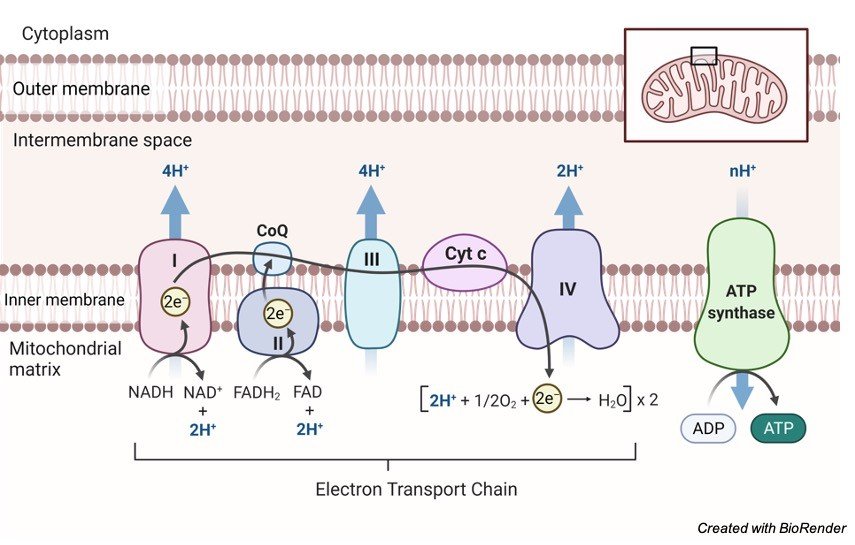
iii. Cytochrome System
The hydrogen carrier system, another name for cytochrome system, is the place where the hydrogen atoms are dispatched from kreb cycle and glycolysis. In the mitochondria is the cristae, where extremely small particles are present in the outer layer. The atoms are collected by the hydrogen acceptors.
The working of cytochrome system is as follows: where the previous coenzymes are consigned to the other coenzymes, which gets oxidized and liberates energy and hydrogen, these hydrogen will attach with the oxygen atoms of the aerobic respiration and will result in the formation of water molecule.
From one single molecule of glucose, 38ATP is gained in aerobic respiration. Glucose is also obtained from the food we consume, which can be utilized during respiration, however the mechanism differs. Through respiration plants also obtain energy.
Cellular Respiration Citations
Share
Similar Post:
-

Phosphorylation: Definition, Types, and Examples
Continue ReadingPhosphorylation Definition
Phosphorylation is the transfer of a phosphoryl group from a donor to a receiver molecule.
Phosphorylation is a biological process that involves the addition of a phosphate molecule to an organic substance such as glucose or adenosine diphosphate (ADP).
In the latter case, the addition of the phosphate group to transforms ADP to adenosine triphosphate (ATP), a crucial molecule that provides energy for a variety of functions in living cells, including nerve impulse transmission and muscular contraction.
The addition of a phosphate molecule to an organic substance is the easy response.
What is Phosphorylation?
Phosphorylation is a crucial biological step in which phosphate molecules are added to an organic component to make it useful for a variety of activities in a live organism.
Another similar term is “phosphorylate,” which refers to the addition of a phosphoryl group to an organic molecule.
The phosphorylation reaction is very important in biology since it is required for numerous biological processes including as apoptosis, inflammation, metabolic control, subcellular transport, and proliferation.
The transfer of phosphate molecules to a protein is known as phosphorylation in biology. In a living creature, this transfer prepares proteins for specific functions.
In humans, phosphorylation takes place on the side chains of three amino acids: (1) tyrosine (an amino acid produced in the body of living creatures from another amino acid called “phenylalanine”), (2) serine, and (3) threonine. However, histidine phosphorylation has also been shown in certain investigations.
Tyrosine, serine, and threonine are the amino acids that can be phosphorylated.
Phosphorylation is a reversible process, which means it may add and remove phosphate molecules. Kinases are the enzymes that are responsible for adding phosphate groups to proteins. The enzymes that remove these phosphate groups are known as “phosphatases.”
Purpose of Phosphorylation
Phosphorylation plays a crucial role during a sort of biological processes. It plays a role in the cell’s control of protein activities and signal transmission. Cell growth, signal transmission, cell development, protein synthesis, and cell division are all aided by it.
transmission, cell development, protein synthesis, and cell division are all aided by it. The reaction of phosphorylation is reversible. Phosphorylation and dephosphorylation (opposite of phosphorylation) activate and deactivate the majority of enzymes and receptors, respectively. Phosphorylation of enzymes acts as an on/off switch, changing the activity or function of the enzyme.
The phosphate molecule is a critical component of biomolecules. The researchers discovered that a huge number of metabolites (metabolite intermediates or end products) are phosphorylated in cells, resulting in the production of phosphates.
Initially, two scientists, Thomas Rall and Earl Sutherland, were doing study on the link between glucagon and epinephrine and therefore the liver enzyme glycogen phosphorylase.
The hormones in question were discovered to be involved in the synthesis of 3,5-cyclic adenosine monophosphate. This chemical was discovered to function inside a cell to alter the activity of phosphorylase. As a result, 3,5-cyclic adenosine monophosphate is a molecule that acts as a messenger for hormonal signals.
The phosphorylation of tyrosine regulates protein activity. Tyrosine is an amino acid that our bodies make from phenylalanine, another amino acid. The phosphorylation of the regulating tyrosine causes enzymatic activity-related modifications in the substrate. Phosphorylation can also be used for the following objectives;
1. Protein dissection
2. Control of Enzyme Inhibition
3. Glycolysis activity
4. Protein-protein communication
5. Controls energy-intensive chemical processes.
The Mechanism of Phosphorylation
Protein phosphorylation takes place on the side chains of three different amino acids, notably serine, threonine, and tyrosine, which are phosphorylated reversibly in eukaryotic cells.
The terminal phosphate group is targeted by the nucleophilic (–OH) group in these amino acids. The nucleophilic (–OH) group in these amino acids binds to the phosphate terminal group (-PO32-) and is transferred from the phosphate group to the amino acid side chain by the usual phosphoryl donor adenosine triphosphate (ATP), commonly known as ATP phosphorylation.
Magnesium (Mg2+) facilitates this transition, which lowers the phosphoryl transmission threshold in the γ- and ß-phosphate groups through the nucleophilic (–OH) group.
Due to the large amount of free energy created when ATP is disrupted to generate adenosine diphosphate (ADP) in the phosphate-phosphate bond, this phosphorylation process is one-way.
Phosphorylation is a critical step in controlling protein function across a wide range of proteins and is strongly connected to protein activity. By causing conformational changes in the phosphorylated protein, phosphorylation regulates protein function and cell signalling.
All of these phosphorylation changes have a two-fold effect on the protein. To begin, conformational changes in the protein are used to monitor its catalytic activity. As a result, phosphorylation can either activate or deactivate a protein.
Second, phosphorylated proteins attract surrounding proteins with structurally preserved domains that recognise and connect to phosphomotifs. The amino acids that differentiate these domains are distinct.
Phosphotyrosine (pY) selectivity is demonstrated by the Src homology2 (SH2) and phosphotyrosine-binding (PTB) domains, however variations between these two kinds are unique to various phosphotyrosine species.
Phosphoserine (pS) is recognised by both the MH2 and WW domains, but phosphothreonine (phosphorylated threonine) (pT) is recognised by forkhead-associated FHA domains.
The ability of phosphoproteins to attract other proteins, in which phosphorylated signal protein is recruited downstream, is important for signal transduction.
Protein phosphorylation is one of the reversible post-translational modifications (PTM) that is controlled by kinases to phosphorylate and phosphatases to dephosphorylate substrates. The phosphorylated protein dynamics behaviour in a cell is promoted by both enzyme types.
In reality, the size of the phosphoproteome in a single cell is determined by the spatial and temporal equilibrium of kinase and phosphatase concentrations inside the cell, as well as the catalytic performance at a specific location.
Protein Kinases
Kinases are enzymes that help phosphate transfer to substrates. More than 500 kinases have been predicted from the human proteome. This group of proteins can be found in the human kinome.
Lipids, carbohydrates, nucleotides, and proteins are among the substrates for kinase action. While guanosine triphosphate is utilised in a few kinases, ATP is nearly universally used as a co-substrate in protein kinases.
ATP is ideal for the transition of α-, β– or γ- phosphate classes in nucleotidyl-, pyrophosphoryl-, and phosphoryl conversion. The ATP binding site is generally preserved, although kinase substrate selectivity varies.
Protein kinases are divided into subgroups based on their catalytic domains, which include tyrosine kinases and serine/threonine kinases. Serine / threonine kinases account for about 80% of the mammalian kinome, while phosphoproteomes pS and pT account for more than 90% of the phosphoproteome.
According to research, the relative abundance ratio of pS:pT:pY in a cell is 1800:200:1. Despite the fact that pY is not as common as pS and pT, global tyrosine phosphorylation is at the top of biomedical science’s priority list due to its link to human sickness via the dysregulation of receptor tyrosine kinases (RTKs).
The protein kinase substrate’s specificity is determined not only by the desired amino acid, but also by the consensus sequences that surround it. In certain kinases, these consensus sequences allow for the phosphorylation of a single protein as well as many phosphorylated substrates (>300).
As a result, kinases may be able to phosphorylate single or multiple amino acids in individual proteins if kinase-specific consensus sequences are available.
Control subunits in kinases operate as activating or auto-inhibiting domains with various regulatory substrates. Phosphorylation of these subunits is a common method of regulating kinase activity. Most protein kinases are dephosphorylated and inactive in their natural state. Only a small percentage of phosphorylated kinases are fundamentally inefficient or inactive because they are constitutively active.
Phosphorylation and dephosphorylation must be combined in some kinases, including Src, indicating that this proto-oncogene is tightly controlled. By regulating the spatial connection between kinases and upstream and downstream regulators, scaffolding and adaptor proteins can also influence kinase behaviour.
The activity of certain kinases can be determined by incubating immunoprecipitate with substrates of different kinases and ATP. Commercial instruments are available for this type of test, and they can accomplish colorimetric, radiometric, or fluorometric identification.
Although this type of test shows the activity of specific kinases, including kinase enrichment, it does not show the proteins that kinases alter or the influence of endogenous phosphatase activity.
Signal Transduction Cascades
Because protein phosphorylation is reversible, cells may easily adjust to intracellular or external stimuli, this type of PTM is appropriate for signal transmission. One or more proteins that sensitively represent the physical sensors by binding a ligand, cleavage, or some other response differentiate signal transduction cascades of the signal.
When kinases are phosphorylated, these receptors activate downstream, then phosphorylate and activate their cognate downstream substrates, as well as other kinases, before reaching the exact response.
Signal transduction pathways can be linear, with kinase A activating kinase B, which then activates kinase C, and so on. Kinases A trigger multiple kinases, which in turn excite more kinases, revealing signalling pathways that amplify the initial signal. With this type of communication, a single molecule can induce widespread cellular activity like proliferation, for example.
Protein Phosphotases
The pace and breadth of phosphorylation-related signalling are controlled by three pathways:
1. Separation of the stimulating ligand from the other ligands
2. Proteolysis of a substrate by a kinase
3. Phosphatase Dephosphorylation
Around 150 phosphatases of pS, pT, and pY residue types are known to be present in the human proteome. Although both phosphatase groups have the same ultimate goal of dephosphorylation, they go about it in distinct ways.
Serine/threonine phosphatases, bimetallic centres (Fe/Zn), and tyrosine control quick hydrolysis in the phosphorus group of the phosphorus atom. Phosphatases produce a thiophosphoryl covalent intermediate that permits tyrosine residues to be removed.
In living cells, hosphorylation is crucial since it is through this process that energy-rich molecules (such as ATPs) are produced. Phosphorylases and kinases, for example, catalyse the addition of a phosphoryl group (phosphate) to ADP, resulting in ATP.
Phosphorylation Types
Phosphorylation and dephosphorylation may occur in a variety of substances.
1. Glucose Phosphorylation
When glucose is phosphorylated with different other sugars during its catabolism, it is referred to as phosphorylation. D-glucose is first transformed to D-glucose-6-phosphate in glycolysis, for example. Glucose is a tiny molecule that penetrates quickly. Because glucose is so little, it gets into the cells fast.
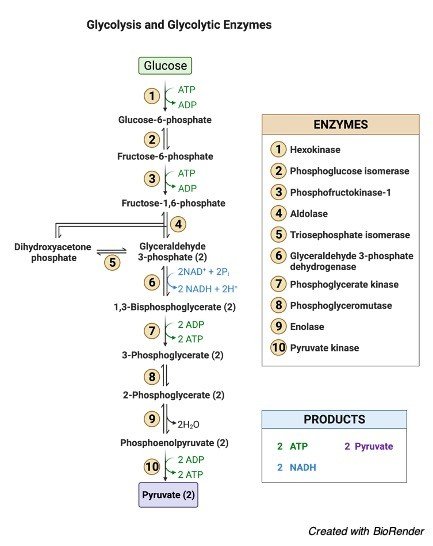
Phosphorylation is a larger enzyme that can’t get into the tissue rapidly. Phosphorylation is also necessary for the control of blood glucose levels. The synthesis of glycogen is directly proportional to the content of glucose. Phosphorylation of glucose is also linked to heart development.
2. Protein Phosphorylation
Phosphorylation of proteins occurs when an amino acid is linked to a phosphorylate group. Even though phosphorylation occurs with threonine and tyrosine in eukaryotes and histidine in prokaryotes, serine is the most common amino acid.
When one phosphate group interacts with the hydroxyl (-OH) group of a serine, threonine, or tyrosine side chain, this is referred to as an esterification process.
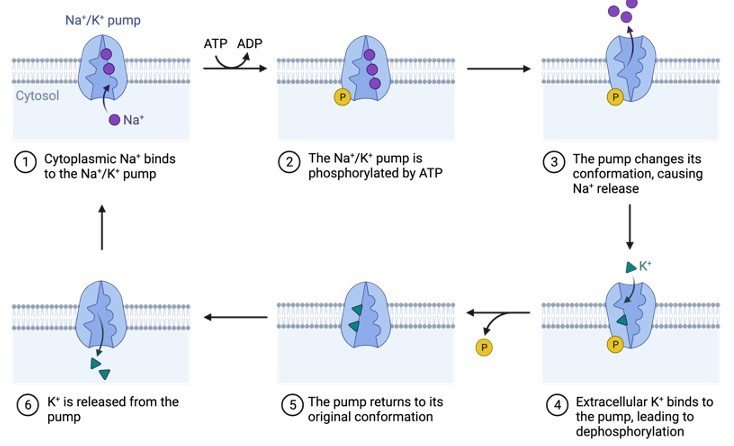
Protein kinase attaches the amino acid to the phosphate group in a covalent manner. The mechanism differs significantly between prokaryotes and eukaryotes.
The best-studied kind of phosphorylation appears to be post-translational modifications (PTM), which indicate that proteins are phosphorylated after conversion from an RNA sequence. Dephosphorylation and reversal processes were performed by protein phosphatases.
Protein phosphorylation may be seen in the phosphorylation of histones, which is a good example. In eukaryotes, DNA is linked with chromatin-forming histone proteins.
Histone phosphorylation alters the DNA-protein and protein-protein interactions, affecting chromatin shape. When DNA is degraded, phosphorylation occurs to provide new locations across damaged DNA so that repair procedures can operate correctly.
In addition to its importance in DNA repair, protein phosphorylation plays an important role in metabolism and signalling cascades.
3. Oxidative Phosphorylation
Oxidative phosphorylation is the process through which a cell releases and absorbs chemical energy. In the eukaryotic cell, reactions occur within the mitochondria. Interactions in the electron transport chain and chemiosmosis are involved in oxidative phosphorylation.
Finally, the transfer of electrons from molecules and proteins into the inner membrane of mitochondria via the electron transport chain produces the energy needed to generate adenosine triphosphate (ATP) in chemiosmosis.

NADH and FADH2 send electrons to the electron transport chain during this procedure. As electrons go down the chain, they release energy as they go from higher to lower energy. Much of the energy used to create an electrochemical gradient is spent on transporting hydrogen ions (H+).
By interacting with H+ ions at the network’s end, electrons are transformed to oxygen and water is created. The ATP synthesiser receives ATP synthase energy from these ions.
As ATP is dephosphorylated, the phosphate group is degraded, producing energy that may be used by the cell. It’s possible that adenosine isn’t the sole base that gets phosphorylated to make AMP, ADP, and ATP. Guanosine, for example, has the potential to produce GMP, GDP, and GTP.
Detecting Phosphorylation
The phosphorylation of a molecule is detected using a mass spectrometer, electrophoresis, and antibodies. Phosphorylation sites, on the other hand, are difficult to identify and describe. Fluorescence, electrophoresis, and immunoassays are all employed in conjunction with isotope marking.
Biological Importance of Phosphorylation
Organic phosphates, which help living organisms develop tissues through anabolic chemical reactions, are important in the transfer of energy.
The importance of organic phosphates in metabolism was demonstrated and the findings were reported in Harden and Young’s study, which showed that when inorganic phosphorus was applied to the media and then converted to organic phosphate, the fermentation of glucose by cell-free yeast juice quickly improved.
Physiological Importance of Phosphorylation
Phosphoric acid is used to make the cell protoplasm. Phosphorylation is thus a crucial chemical activity for all cells. It’s also important for absorbing and metabolising a wide variety of foods.
The following is a list of its effects on several metabolic pathways:
In relation to Carbohydrates:
1. Phosphorylation aids carbohydrate absorption by the intestinal mucosa as well as glucose reabsorption by the kidneys. Hexose phosphate is produced in each of these epithelial cells. This molecule undergoes dephosphorylation, allowing hexoses to enter the circulation while leaving phosphoric acid alone.
2. Glycogen synthesis from glucose and glycogen breakdown into glucose are hypothesised to occur during phosphorylation in the liver and muscles.
3. Phosphorylation is common at all phases of chemical changes that occur after muscle contraction. Phosphorylation and dephosphorylation occur in this area in a cycle. Glycogen is broken down into lactic acid by a number of phosphorylated molecules.
In relation to Fats:
1. The absorbing epithelium produces neutral fats and phospholipids mostly during fat digestion. The enzyme phosphorylase is responsible for phosphorylation.
2. Phospholipids, particularly lecithin, are produced by the liver. The transfer of fat is an important stage. It also acts as the primary step of fatty acid oxidation. Fatty acid oxidation is a mitochondrial activity.
In relation to Proteins and Vitamins:
All phosphoproteins, including nucleoproteins, caseinogens, and others, must be produced. Phosphorylation is so expected to have a role in tissue oxidation, which is the process by which proteins, lipids, and carbohydrates are destroyed.
When it comes to the vitamin, it’s a no-brainer. Compounds like riboflavin phosphate, thiamine pyrophosphate, and others are found in certain vitamin B groups.
They are thought to be coenzymes in the oxidation and reduction phases of cell metabolism.
Regulation of Phosphorylation
The adrenal cortex is considered to be the source of the phosphorylation. Glucocorticoids increase the inhibition of phosphorylation after adrenalectomy.
Through its adrenocorticotropic hormone, the anterior pituitary may offer sophisticated phosphorylation control to the adrenal cortex.
The marasmic condition of adrenal cortex disorders may be explained in part by phosphorylation disturbance, which impairs absorption, metabolism, and body nutrition.
Phosphorylation Citations
Share
Similar Post:
-

Plants: Definition, Types, and Examples
Continue ReadingPlants Definition
As defined by botany, any eukaryotic species of the biological kingdom Plantae that is photosynthetic and has a rigid cell wall. Planta is a Latin word that means “sprout, shoot, cutting.”
Plants Characteristics
A plant is any eukaryotic organism that belongs to the Plantae biological kingdom. In the strictest sense, plants are embryophytes, that included vascular plants, liverworts, hornworts, and mosses. In certain less stringent references, green algae was considered a plant in certain less stringent references. Green algae include both unicellular and multicellular species with chloroplasts and cell walls.
Autotrophs are plants that eat just their own kind of food. Photosynthesis is how they produce their own nourishment. They can capture energy through the chloroplast’s green pigment (chlorophyll) and use carbon dioxide and water to create carbohydrates as food and oxygen as a by-product.
Plants are typically found at the top of the food chain since they are autotrophs. They’re referred to as “producers.” Other creatures, especially mammals, consume them as food. Animals, on the other hand, are heterotrophs, meaning they must devour other species to survive.
Some animals (especially herbivores) consume just plants, whereas others eat only meat or a combination of animal and plant matter. Plants do not rely on animals to develop and thrive since they are capable of producing their own nourishment.
A group of carnivorous plants (such as the Venus flytrap) that catch and devour animal prey, primarily when photosynthesis is difficult, is an exception.
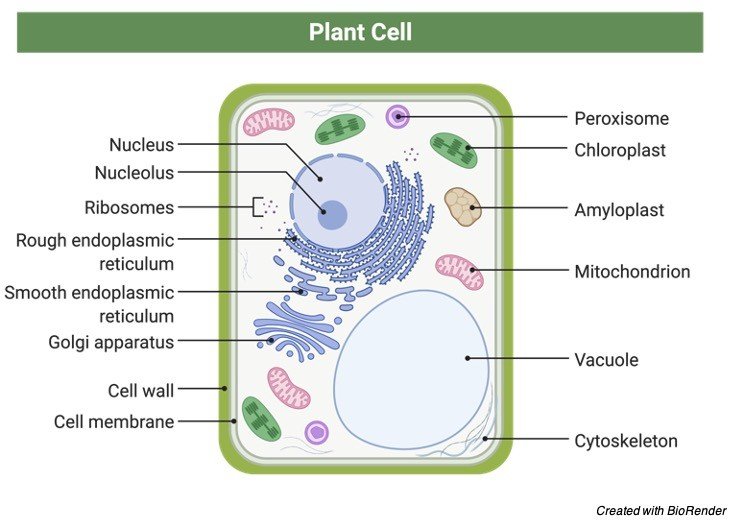
Plants are eukaryotes, or multicellular organisms. Plants, like mammals, have a membrane-bound nucleus inside their cells. The nucleus is an organelle that houses genes on chromosomes. Golgi apparatus, endoplasmic reticulum, lysosomes, peroxisomes, and plastids are further organelles suspended in the cytoplasm of a plant cell.
Plastids are found in plants. Plastids inside a eukaryotic cell indicate that it is more likely a plant than an animal. Plastids are available in a wide range of forms and sizes.
Chloroplasts are photosynthesis-related plastids that contain chlorophyll (green pigments). Apart from green, chromoplasts include pigments and are involved in pigment production and storage. Light energy is absorbed by chlorophyll systems at certain wavelengths in the electromagnetic spectrum.
Pigments also contribute to the colour of plant structures (e.g. green leaves, red flowers, yellow fruits). Non-pigmented plastids, such as amyloplasts, elaioplasts, and proteinoplasts, are known as leucoplasts. Their primary use is to store food. Sugar, such as starch, is used by plants to store food.
Inside the cell of plants, there is a huge vacuole. This cytoplasmic structure is important in turgor pressure control.
Apart from the plasma membrane, plants have stiff cell walls. A plant cell’s cell wall provides additional structural support.
Plants do not have a skeletal structure like animals, but their cell walls are largely made of cellulose material, which helps to provide structural support.
Plants have a unique cell division system in which daughter cells are separated by a cell plate (phragmoplast). Plants do not have the same mobility as mammals. They are unable to go from one area to another at their leisure. As a result, they must contend with extreme weather, such as heat. Their cell walls, which keep their bodies from drying up, are one of the ways they can endure heat.
Plants, meanwhile, continue to move, albeit in a different way. The folding of the leaflets of the plant Mimosa pudica when touched, for example, and the shutting of the leaf of the Venus flytrap while trapping prey are both examples of nastic movement.
Some plants, such as the silver birch Betula pendula, would even droop their branches and leaves at night, as if they were “sleeping.” Tropism is another type of plant movement.
Tropism, on the other hand, is more of a response to a stimulus than a movement. Plants, for example, prefer to grow towards the light source (phototropism).
Plasmodesmata are plasmodesmata found on plants. Plants contain plasmodesmata, which behave as if they were cell connections between plant cells, but animals have cell junctions that keep cells in an animal tissue.
These cytoplasmic bridges between neighbouring cells are formed by the cell wall. These “bridges” assist maintain the tonicity of plant cells by facilitating cell contact and allowing fluid circulation.
Plants are multicellular, with numerous cells organised into tissues and organs that work together to accomplish a specific purpose.
Anchorage, support, and photosynthesis are all specific functions of plant organs (e.g. roots, stems, leaves, etc.) Plants can grow indefinitely thanks to their meristematic tissues. Indeterminate, actively dividing cells make up the tissue, which gives birth to differentiated tissues including epidermis, trichomes, phellem, and vascular tissues.
Plants do not have sensory organs, yet they may detect their surroundings in a variety of ways. Despite their absence of eyes, ears, and noses, plants can “see,” “hear,” and “smell.” They appear to “feel” and respond in ways that animals do not.
Plants may not have the same nervous system as mammals, but they appear to have their own system based on how they respond to their environment.
Despite not having eyes, Arabidopsis has photoreceptors (at least 11 kinds) that let the plant perceive light. Herbivory, for instance, might cause the release of specific compounds on the damaged plant component.
Herbivores are deterred by the production of defensive compounds by plants. Tomatoes have been seen emitting volatile signals to warn adjacent plants of an imminent herbivore assault.
Plants reproduce in two ways: asexually and sexually. Plants reproduce asexually by budding, fragmentation, fission, spore development, vegetative propagation, apomixis, and other methods.
Male and female gametes merge during fertilisation, resulting in sexual reproduction. In general, the plant life cycle includes generational alternation, or the sporophyte and gametophyte stages alternating.
Plants are able to “breathe.” Carbon dioxide from the atmosphere enters the plant cell through stomata. Carbon dioxide is transformed to oxygen during photosynthesis, which the plant releases as a metabolic by-product into the environment through the stomata.
Plants may lack other biological systems, but they do generate compounds that aid in plant defence and immunological activities, as well as plant hormones that operate as signalling molecules.
Plant Body
Plant Body Embryophytes have two primary organ systems: one for the shoots and another for the roots. The shoot system comprises of body components in the plant’s top section, whereas the root system consists of body parts in the bottom region.
Plant parts such as stems, branches, leaves, flowers, and fruits may all be found in the shoot system. They are frequently seen above ground. Roots, tubers, and rhizomes are all part of the root system. They are frequently discovered underground.
Plant tissues include the following:
1. Plant tissues made up of undifferentiated and mitotically active cells are known as embryonic or meristematic tissues. Apical meristem and cambium are two examples.
2. Permanent tissues are differentiated cell-based plant tissues. Fundamental (e.g., parenchyma, collenchyma, sclerenchyma) and complex (e.g., parenchyma, collenchyma, sclerenchyma) permanent tissues can be further divided (e.g. phloem and xylem tissues)
3. Reproductive tissues are those parts of the plant that are engaged in reproduction. The sporogenous tissues are one example.
Plant cells are eukaryotic, meaning they have a well-defined nucleus. The chromosomes that carry genes are found in the nucleus. The endoplasmic reticulum, Golgi apparatus, mitochondria, lysosomes, and plastids are the other organelles except the nucleus.
Chloroplasts (containing chlorophyll, a green pigment), chromoplasts (with colours other than green), and leucoplasts (with pigments other than green) are the three types of plastids (colorless plastids). The vacuole is a huge structure inside the plant cell. It’s in charge of keeping turgor pressure in check.
The cytoplasm, where these organelles are suspended, is surrounded by the plasma membrane. The cell has a second layer, the cell wall, in addition to the plasma membrane. The cell wall, on the other hand, is not unique to embryophytes. Other species with cell walls include fungus, algae, and certain bacteria.
Primary and secondary cell walls make up the cell walls of embryophytes. Cellulose, hemicelluloses, and pectin make up a main cell wall. A thicker layer is the secondary cell wall. It contains a lot of lignin, which helps to reinforce and waterproof the wall.
One of the numerous functions of the cell wall is to aid in the resistance to osmotic pressure. Water flows into a plant cell when it is put in a hypertonic solution, causing the cell to expand. During severe osmosis, the existence of the cell wall prevents the cell from bursting.
Water diffuses out of a plant cell when it is put in a hypotonic solution, and turgor pressure is reduced, causing the cell to become flaccid. Further water loss will cause plasmolysis, which will eventually lead to cytorrhysis, or the total collapse of the cell wall.
Photosynthesis, respiration, transpiration, tropisms, nastic movements, photoperiodism, circadian rhythms, seed germination, and dormancy are all essential physiological activities that plants do.
Plant Genomics
Plants’ genomes are rather big. With roughly 94,000 genes, the wheat Triticum asestivum genome is the biggest of the plant genomes that have been sequenced.
Plant Life Cycle
Plants have two generations in their life cycle: gametophyte generation and sporophyte generation. Alternation of generations refers to the transition between diploid and haploid forms. Certain algae, such as Archaeplastida and Heterokontophyta, have this behaviour.
The sporophyte and the gametophyte are separate organisms in algae with generations that alternate. The gametophyte generation in embryophytes is one in which the phase begins with a haploid spore (n). To become a gametophyte, the spore goes through a sequence of mitotic divisions.
A haploid multicellular plant type is known as a gametophyte. There would just be one pair of chromosomes. Because the gametophyte phase is the sexual phase of the life cycle, the plant will grow sex organs that generate haploid gametes. Following the union of gametes, the gametes that participated in fertilisation would join the sporophyte generation, which is characterised by a diploid plant form.
The sporophyte is the main phase of tracheophytes (vascular plants) and is multicellular. As a result, the sporophyte is the most visible plant. The gametophyte, on the other hand, is the dominant plant in bryophytes (mosses and liverworts), and hence the predominant plant we see.
Tracheophytes’ life phases begin with a seed, which develops into a scion when conditions are favourable for development. The scion develops leaves, stalks, and branches as it grows. It grows into an adult plant that produces blooms in the end.
Sex cells are found in the flowers, such as sperm cells in pollen grains and ova in the ovary’s ovules. The seed contains a zygote formed by the fusion of the sex cells. Plants that are monoecious have both sex cells, whereas dioecious plants only have one kind of sex cell.
Plants can reproduce asexually as well. They achieve this by avoiding the use of gametes. Budding, fragmentation, fission, spore generation, vegetative propagation, and apomixis are all examples of asexual reproduction.
The ageing process of plants is referred to as plant senescence. During leaf senescence, for example, the yellowing of leaves happens as a result of chlorophyll breakdown, leaving only the carotenoids. However, certain plants, such as deciduous trees, may continue to produce new leaves.
Plant Ecology
Plants do not need to hunt or eat animals for nourishment since they are capable of photosynthesis (with the exception of carnivorous plants). They can create their own food by combining light energy, atmospheric carbon dioxide, and water molecules.
Nonetheless, the waste that animals exhale during breathing is one source of carbon dioxide. They give out oxygen as a waste product of photosynthesis in exchange. Animals, like other aerobic creatures, require oxygen to survive.
Other essential nutrients are obtained by plants from dissolved minerals in the soil. They take them in via their roots.
Calcium, magnesium, nitrogen, phosphorus, potassium, and sulphur are some of the macronutrients they get from the soil. Plants absorb boron, chloride, copper, iron, manganese, and molybdenum as micronutrients.
As a result, the breakdown of dead plant parts, or the entire plant, results in the return of important minerals and chemicals to the Earth.
They are frequently put at the top of a food chain due to their feeling of independence. In an ecosystem, they are the primary producers. As a result, plant extinction can have a significant influence on an ecosystem.
The Red List of Threatened Species of the International Union for Conservation of Nature (IUCN), a system for monitoring the conservation status of species across the globe, used a method of categorising species based on extinction risk. As a result, species can be classified as “data deficient,” “near-threatened,” “vulnerable,” “endangered,” “critically endangered,” “regionally extinct,” “extinct in the wild,” and “extinct.”
In 2016, the International Union for Conservation of Nature (IUCN) listed 2,493 plants as critically endangered and 3,654 species as endangered.
Plants develop symbiotic relationships with other species. Here are several examples:
1. Mutualism – for example, plants provide nectar for honeybees, while honeybees aid in the dispersion of pollen grains.
2. Predation – for example, carnivorous plants that eat insects and other tiny animals
3. Competition – for example, plants that compete for available space and nutrients with other plants for habitat.
4. Commensalism – for example, plant fruits that adhere to animal hair for free transportation.
5. Parasitism – for example, parasitic plants that obtain nutrients from their hosts, such as Cuscuta (dodder), which attaches to an acacia tree and develops haustoria that absorb nutrients.
The Census of Marine Life projected in 2011 that there might be about 8.7 million eukaryote species on Earth, including about 298,000 plant species. There have previously been 215, 644 described and catalogued.
Plant Evolution
Organelles such as plastids and mitochondria, according to the endosymbiotic hypothesis, reflect once free-living prokaryotes. The chloroplasts appear to be connected to cyanobacteria, which are prokaryotic microorganisms.
The structural similarity between cyanobacteria and chloroplasts provides the foundation. Furthermore, they share the same photosynthetic pigments as the genome and a single circular DNA molecule.
Endosymbiotic processes, it appears, were responsible for the emergence of the earliest photosynthetic eukaryotes one billion years ago. The embryophytes are thought to have evolved from Charophyta (a kind of green algae).
Many similarities exist between charophytes and embryophytes, such as the development of phragmoplasts during mitosis.
The following is a short chronology of embryophyte evolution:
Phanerozoic aeon » Paleozoic era » Ordovician period: The first embyophytes (land plants) arose during the Ordovician epoch (485 million years ago to 440 million years ago).
Phanerozoic eon » Paleozoic era » Devonian period: Primitive plants, trees, and shrub-like forests dominated the earth throughout the Devonian epoch (415 million to 360 million years ago), providing new habitats for terrestrial creatures. Elkinsia, an early seed fern, developed seeds, especially in the late Devonian era.
Phanerozoic eon » Mesozoic era: This period lasted 252 million to 66 million years. Flowering plants first occur in the Triassic period (about 200 million years ago).
Phanerozoic eon » Cenozoic era: The “new life” epoch, which stretches from 66 million years ago to the present day, is the most recent geological epoch. The grasses first developed during this time period, about 40 million years ago. To withstand the low CO2 and dry conditions of the tropics, these plants and many other plant species developed a novel metabolic process.
Plant Taxonomy
Because they all include chloroplasts and a cell wall, green algae, fungus, and embryophytes are included in the original definition of plants. Algae and fungus, on the other hand, were finally assigned to their separate kingdoms.
Plants (i.e. Plantae sensu strictissimo) are multicellular organisms having cellulose-containing cell walls and chloroplasts for photosynthesis in the strictest meaning. The kingdom Plantae is made up of embryophytes, which include vascular plants, liverworts, mosses, and other fossil plants with similar characteristics.
Embryophytes and green algae are included in Plantae sensu stricto (“plants in a limited sense”) (Chlorophyta and Charophyta). This concept of plants is still commonly used today. They belong to the Viridiplantae (or Chlorobionta) group, which is also known as the green plants.
The following are the divisions of the kingdom Plantae sensu stricto: Chlorophyta, Charophyta, Marchantiophyta (liverworts), Anthocerotophyta (hornworts), Bryophyta (mosses), Lycopodiophyta (club mosses), Pteridophyta (ferns, whisk ferns, and horsetails), Cycadophyta (cycads), Ginkgophyta (ginkgo), Pinophyta (flowering plants).
Significance of Plants
Plants are necessary for the survival of many creatures since they are the food chain’s producers. They are capable of storing starch. They’re also a valuable source of minerals and chemicals.
Plants provide homes for a variety of creatures, e.g. insects and arboreal organisms. They are also the most important source of oxygen for aerobic creatures.
Medicinal qualities can be found in some plants. Plantain (Plantago major) leaves for decreasing inflammation and discomfort, and burdock (Arctium minus) roots and leaves for eczema and damaged skin are just a few of the many therapeutic plants.
Essential oils, pigments, resins, tannins, alkaloids, amber, waxes, cosmetics, plastics, rubber, varnish, lubricants, inks, and a variety of other goods are all made from plants.
Buildings, musical instruments, boats, and furniture are all made from plant-based wood. It’s also utilised in the production of paper.
Plant Research
Botany is the field of science that examines plants (or plant biology). A botanist is a specialist in this subject. Some of the disciplines of study comprise morphology, cytology, histology, physiology, ecology, evolution, taxonomy, and pathology. Sub-disciplines emerged as a result of the diversity of plant groupings, including:
1. Paleobotany is the science of studying fossil plants.
2. Algology is the study of algae.
3. Mycology is the study of fungi.
4. Bryology is the study of mosses, liverworts, and hornworts.
5. Pteridology is the science of ferns.
6. Pollen grains and spores are studied in palynology.
Applied botany is concerned with the commercial and economic applications of plants. Agriculture (for example, agronomy, horticulture, and plant breeding), forestry (for example, dendrology, wood technology), pharmaceutical botany, and landscape architecture are all included.
Plants Citations
- Allelopathic Plants: Models for Studying Plant-Interkingdom Interactions. Trends Plant Sci . 2020 Feb;25(2):176-185.
- Thriving under Stress: How Plants Balance Growth and the Stress Response. Dev Cell . 2020 Dec 7;55(5):529-543.
- Unraveling salt stress signaling in plants. J Integr Plant Biol . 2018 Sep;60(9):796-804.
Share
Similar Post:
-

Cytidine Monophosphate: Definition, Types, and Examples
Continue ReadingWhat is Cytidine Monophosphate?
Cytidine monophosphate is nucleotide and can be written as C9H14N3O8P and these nucleotides comprises of 3 parts; phosphate group, sugar of 5C and a nucleobase.
Sugar can be either ribose or deoxyribose. DNA is made from the deoxyribose sugar and RNA from ribose sugar. The components of nucleic acids are the nucleotides.
The nucleic acid backbone is formed from phosphate and the sugar molecule and the synthesis takes place in 5’-3’ direction, although the two strands run in the opposite direction, so that they can bond with each other due to complementary bases.
Nucleotides can be linear as well as in cyclic form, where the phosphate group is bounded to the hydroxyl group of sugar. Phosphate group and nucleotide forms nucleoside.
Thus, to the sugar molecule, when a single phosphate group is attached it is called as nucleoside monophosphate and when two phosphate groups, it is called as nucleoside diphosphate and similarly when 3, it is called as nucleoside triphosphate.
Nucleoside can be deoxyribonucleoside or ribonucleoside. On the basis of pentose sugar, thus ribonucleoside consists of ribose sugar with nucleoside and these nucleosides can be adenine, guanine, cytosine and thymine.
Similarly, deoxyribonucleoside may have nucleosides like adenine, guanine, cytosine and thymine, in which adenine pairs with thymine and cytosine with guanine.
Pyrimidine and purine are two types of nucleoside where pyrimidine is single stranded and purine is double stranded.
Cytidine Monophosphate Structure

Cytidine monophosphate is an organic compound which contains ribose sugar, phosphate group, and nucleosides. As cytidine is bound to the ribose sugar, it is a pyrimidine base, with one phosphate molecule attached to the nucleobases.
Cytidine Monophosphate Synthesis
Through de-novo synthesis, CMP can be generated. Pyrimidine like cytosine can be formed through various steps. Carbamoyl phosphate synthetase forms carbamoyl phosphate which gets transformed to carbamoyl aspartate and then to dihydroorotate which will further be oxidized to orotate, which interacts with PRPP to form orotidine-5- monophosphate, which is transformed into pyrimidine.
For the synthesis of uridine mono phosphate, from OMP carbon dioxide is removed by OMP decarboxylase. Uridine mono phosphate is phosphorylated to form Uridine di phosphate and similarly triphosphate, which when aminated forms cytidine triphosphate by CTP synthetase.
Cytidine monophosphate is formed when CTP is disintegrated. Breakdown of further CMP results in formation of cytosine and end-products like ammonia, CO2 and Beta-alanine.
Through salvage pathway cytosine can be re-obtained. Through deamination, cytosine is transformed to uracil and then to uridine with uridine phosphorylase and further with the help of nucleoside kinase, uridine is transformed to UMP.
Cytidine Monophosphate Function
Monomer of RNA is cytidine monophosphate, where CMP is reduced to deoxycytidine monophosphate and phosphorylated to form cytidine diphosphate by CMP kinase and when again phosphorylated it produces cytidine triphosphate.
Cytidine Monophosphate Citations
- Bacterial CMP-sialic acid synthetases: production, properties, and applications. Appl Microbiol Biotechnol . 2008 Oct;80(5):757-65.
- Cytidine 3′,5′-cyclic monophosphate: a third cyclic nucleotide intracellular mediator? Biochem Soc Trans . 1992 May;20(2):469-74.
- Cyclic cytidine 3′,5′-monophosphate (cCMP) in cell regulation. Mol Cell Endocrinol . Nov-Dec 1982;28(3):373-85.
Share
Similar Post:
-

Facilitated Diffusion: Definition, Types, and Examples
Continue ReadingFacilitated Diffusion Definition
Facilitated diffusion (also known as facilitated transport or passive-mediated transport) is the process of spontaneous passive transport (as opposed to active transport) of molecules or ions across a biological membrane via specific transmembrane integral proteins.
What is Facilitated Diffusion?
Facilitated Diffusion is a passive transport where the movement of molecules is mediated through the plasma membrane with the help of transporter protein such as carrier is called as facilitated diffusion.
The transfer of molecules takes place from a higher concentration area to a lower concentration in facilitated diffusion as well, like simple diffusion. The solute concentration variation through the membrane is the driving force responsible for facilitated diffusion.
Although majority of facilitated diffusion does not suffice the need of ATP, however in few cases it does require ATP. Facilitated diffusion take place due to the exactitude between the carriers and the solute.
In facilitated diffusion molecules can progress in both the direction i.e., towards or against the concentration gradient. Kinetic energy along with concentration gradient helps to carry out facilitated diffusion.
The molecules which can pass through are water soluble huge molecules through the plasma membrane in facilitated diffusion.
Facilitated Diffusion Principle
Plasma membrane’s lipid bilayer is hydrophobic, thus water-soluble molecules cannot pass through; however tiny water molecules due to their concentration gradient can pass through the membrane. Although hydrophobic huge molecule requires either carriers or channel protein to pass through the membrane.

When molecules passes with the help of the channel protein, there are pores present in the transmembrane of the membrane, resulting in the flow of molecules and are spread throughout the cytosol and outer surrounding thus, extending to the other organelles.
Through the transmembrane channel, charged molecules will move and these transporters protein are incorporated to the membrane, having attraction towards the matrix.
However, in other cases, molecule will attach to the carrier protein, which will change the shape of the molecule leading to the molecule move inside the cytosol, and this process is seen in enzymes, which are huge molecules.
Facilitated Diffusion and Channel Proteins
These proteins aid in the movement of molecules, by channel formation through the membrane and in this membrane lies the transmembrane proteins which are ions.
These channels have a diameter of 4-5 Armstrong and can be choosy and allow only a particular ion to move through such as positive ion and will have differences for various ions, thus being picky towards a particular ion. In the extra and intracellular matrix, hydrophilic domains and core are possessed by these channel, thus cracking the layers wide open.
The water movement through the membrane is mediated by the aquaporins at a very faster pace. On the receival of the electrical signal or attachment of molecule, the doors gets closed and open.
Facilitated Diffusion and Carrier Proteins
Carrier proteins perform facilitated diffusion, by transporting the molecules through the membrane. They do so by attaching to the molecule and getting changes in its shape as they are heavy and then it can move within the cell on the basis of the concentration.
The change in shape also has an impact on the hydrogen bonds. Carrier protein are quite specific in terms of their binding sites, such as they recognize between the D and L sugar type, which makes the plasma membrane as well specific.
Saturation occurs when carrier protein attaches to the substrate, thus allowing movement to take place at a faster pace. They play role in active transport which requires energy for the transportation of molecule.
Factors Affecting Facilitated Diffusion
Environmental factors are the one which has an impact on facilitated diffusion:
a) Concentration Gradient: The diffusion through the membrane occurs due to concentration gradient, which happens from a high concentrated region to a lower concentrated one. However quick diffusion happens due to the concentration diffusion.
b) Temperature: For the shape to change, the amount of energy required is quite high than the activation energy. As the temperature increases the carrier transportation also increases, thus elevating the reaction rate between the carrier protein and the substrate in the molecule.
c) Saturation: On the membrane, carrier proteins are present in specific amount and once these sites are occupied, no more proteins can bind. Thus, even if concentration gradient rate is elevated, rate of diffusion cannot be elevated.
d) Selectivity: Selectivity and transportation rate are reciprocal to each other, as selectivity is achieved from the binding sites which do not treat all the solutes equally, thus ceasing the movement.
Facilitated Diffusion Examples
1) Glucose and amino acid transport: Example is the movement of glucose and amino acid from blood to the cell is the facilitated diffusion example. Through active transport they reach the intestine and are left into the blood. These molecules are moved to cell from the blood through carriers such as amino acid permease and glucose transporters, as they are quite huge.
2) Gas transport: A different example is when to the muscle and the blood, oxygen is transported. The carrier protein is hemoglobin blood and myoglobin in muscle, which results in diffusion due to increase in pressure and thus gets moved to the other side with low pressure. The same process is involved in carbon monoxide and dioxide.
3) Ion transport: Ions possess the same charge like the membrane and are polar thus, cannot move through and thus have transmembrane protein also known as ion channel which are choosy for ions like Na, K and Ca and the transport has to be quick as no energy is used.
Biological Importance of Facilitated Diffusion
The homeostasis between the outer and inner environment is regulated by facilitated diffusion. It also makes the biological membranes specific. Various functions are regulated by facilitated diffusion such as ion transport, oxygen transport and transportation of sugar molecules.
Facilitated Diffusion Citations
- Facilitated diffusion in chromatin lattices: mechanistic diversity and regulatory potential. Mol Microbiol . 2005 Aug;57(4):889-99.
- Facilitated Diffusion Mechanisms in DNA Base Excision Repair and Transcriptional Activation. Chem Rev . 2018 Dec 12;118(23):11298-11323.
- Facilitated diffusion of Argonaute-mediated target search. RNA Biol . 2019 Sep;16(9):1093-1107.
Share
Similar Post:
-

Frameshift Mutations: Definition, Mechanism, and Examples
Continue ReadingFrameshift Mutation Definition
Frameshift mutations occur when nucleotides in the coding region are inserted or deleted, resulting in an altered amino acid sequence during codon translation. A phenotypic alteration, such as the synthesis of an altered protein, may occur from this sort of mutation.
What is Frameshift Mutation?
Frameshift mutation is a form of gene mutation in which the addition or deletion of one or more nucleotides produces a shift in the reading frame of the codons in the mRNA, which can result in an amino acid sequence change during protein translation.
Frame shift mutation is a variant. Reading frame mutation, reading frame shift or framing mistakes are all synonyms for frameshift mutation.
Causes of Frameshift Mutation
The nucleotides of a nucleic acid (such as DNA) can be “read” in groups of non-overlapping, consecutive triplets known as a reading frame. Triplets (or codons) in a reading frame are translated into particular amino acids during translation (or a codon signal).
As a result, if a mutation occurs, such as an insertion or deletion of a nucleotide, the reading frame may be altered. The amino acid sequence is entirely altered. Such changes are known as frameshift mutations (also called reading frame mutation, reading frame shift, or framing error).
The deletion of two nucleotides, which in the above diagram are the nucleotides containing bases, cytosine (C) and guanine (G), has resulted in an erroneous amino acid (G). Glutamate has taken the role of arginine (arg) (glu).
The reading frame is unaffected by the insertion or deletion of nucleotides in multiples of three. As a result, the protein in these situations is likely to have an additional or missing amino acid.
Frameshift mutations are most commonly generated by a mutational mistake during DNA replication or repair. Exposure to acridine dyes, which are capable of causing frameshift mutations, can also cause them. The reading frame of the nucleotide sequence changes due to insertion or deletion (also known as indels) of the nucleotide.
However, the consequences of these mutations vary depending on where they occur. At the interstitial or intercalary location, a nucleotide can be added or deleted.
In certain cases, the insertion and deletion of nucleotides happen at the same time (known as double frameshift), restoring the reading frame to its original state.
A frameshift mutation can cause the whole structure and function of a protein to be lost, resulting in a non-functional polypeptide. However, the phenotypic impact of the mutation will be decided by the resultant codons, post-mutation, and mutation location.
There are three sorts of codons that occur from frameshift mutations;
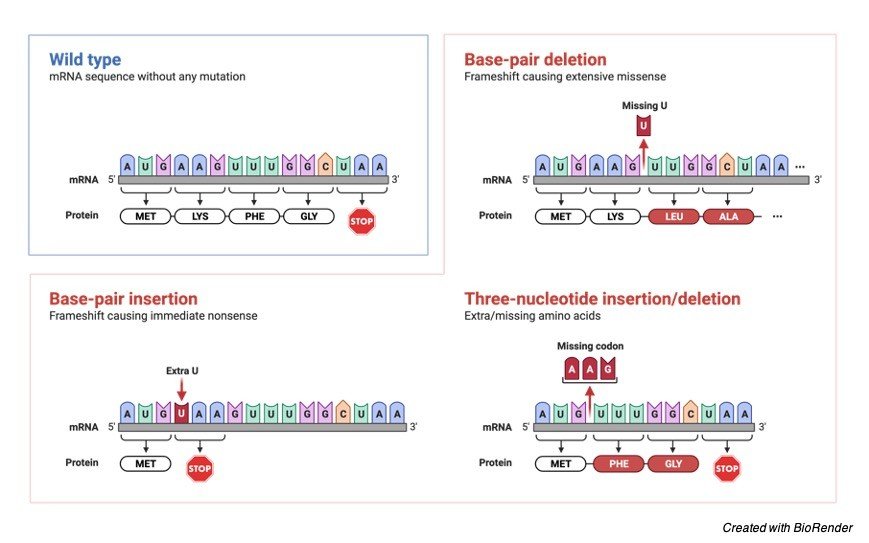
1. Sense Codons: are codons that are read in the same way they were before frameshift mutation.
2. Missense Codons: these are codons that result in the production of an erroneous or different amino acid.
3. Non-sense Codons: these are codons for which no matching tRNA exists, causing the translation process to be truncated.
As a result, frameshift mutations produce an aberrant or faulty protein product with an incorrect amino acid sequence. Such proteins may be entirely new or unusable, depending on where the mutation occurs. A stop codon can also occur from a frameshift mutation. The premature stop codon on mRNA will interrupt the translation process, resulting in a short polypeptide.
The protein may be shorter or longer than the normal protein, depending on the degree and type of the frameshift mutation. Such mutations might arise naturally or as a result of external stressors.
Frameshift mutations are more common in Adenine-Thymine (AT)-rich areas of the nucleic acid, which is an intriguing finding.
Types of Frameshift Mutations
Frameshift mutations can arise when a nucleotide in the nucleic acid is deleted or inserted. A Deletion frameshift mutation occurs when one or more nucleotides in a nucleic acid are deleted, causing a shift in the nucleic acid’s reading frame, or reading frameshift.
Deletion is a more typical method for causing a frameshift mutation, which causes an altered reading frame. (+) 1 frameshift mutation is another name for this mutation.
Insertion frameshift mutation occurs when one or more nucleotides are added to the nucleic acid’s base sequence, causing a shift in the reading frame. The number of nucleotides and the position of nucleotide insertion determine the severity of this sort of frameshift mutation.
The (-) 1 frameshift mutation is another name for this mutation. Understanding frameshift mutations that arise when a nucleotide is inserted or deleted from the usual nucleotide sequence.
Effects of Frameshift Mutations
Frameshift mutations can lead to the following outcomes:
1. A protein with a changed coding sequence may be unusable or a totally different protein. As a result, a variety of metabolic processes may be disrupted.
2. An abrupt halt to the translation process results in non-usable protein, which has ramifications for the physiological systems involved.
3. A frameshift mutation can also lead to cellular translational process abnormalities. The cellular machinery may correct the mistake by upregulating the expression of the mutant gene if no functional protein is produced owing to frameshift mutation. This can cause the cell’s translation machinery to malfunction. As a result, a high number of misfolded proteins may develop, which might be fatal to a cell.
4. However, as seen in HIV patients with frameshift mutations in the chemokine receptor gene, the altered protein might be advantageous and give protection (CCR5).
5. Frameshift mutations cause Crohn’s illness, cystic fibrosis, and some kinds of cancer.
The Genetic Code
The nucleotides encode all of the genetic information in RNA and DNA. A three-nucleotide sequence contains genetic information. Each nucleotide triplet is eventually translated into particular proteins that are necessary for diverse biological activities. There are two crucial stages in the translation of genetic information into protein.
1. Transcription: The genetic information encoded on DNA is “rewritten” on RNA in this process.
2. Translation: In this case, the transcribed RNA is “translated” into a particular amino acid sequence, which finally forms a polypeptide or protein chain.
Discovery of the Genetic Code
The transmission of genetic characteristics in Gregor Mendel’s early genetic studies suggested that genetic information is passed down from generation to generation as a discrete physical and chemical entity. Amino acids were later considered to be genetic information carriers.
The codons or triplets on the DNA sequence were found by scientists including Francis Crick, Sydney Brenner, Leslie Barnett, and Richard Watts-Tobin. Marshall Nirenberg, Heinrich J. Matthaei, and Har Gobind Khorana (1961-1964) discovered and deciphered the nature of a codon.
Reading Frames and Triplet Codon
The whole genome is split into three three-nucleotide segments that do not overlap. The reading frame is defined by the triplet codon that starts the translation process. A particular amino acid or a stop signal known as a codon is encoded by each triplet of the nucleotide. Twenty amino acids are encoded by 64 codon combinations.
However, three of these 64 codons are stop codons, resulting in 61 codons coding for amino acids and three codons coding for the end of the translation process (i.e., 61 codons for amino acids + 3 stop codons = 64 codons).
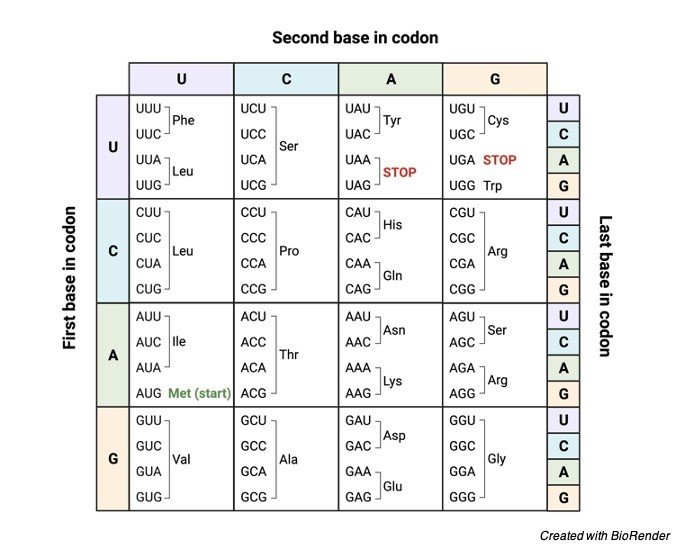
The following are some of the characteristics of a codon:
1. Each codon codes for a specific amino acid during translation. The beginning of amino acid synthesis, as well as methionine synthesis, is encoded by the AUG codon.
2. The three “stop” codons are UAG, UGA, and UAA, which signal the end of amino acid synthesis.
3. Codons are a universal language.
4. The translation process begins with a start codon and continues until the stop codon occurs on mRNA.
From the N-terminus (methionine) to the C-terminus, mRNA is encoded from 5′ to 3′, and it translates into an amino acid in a protein.
Ribosome Translocation
Each codon is converted into an amino acid by mRNA. The ribosomes then link these amino acids together in a process known as ribosome translocation. Protein synthesis is a cyclic process in which the ribosome advances three bases after adding one amino acid to the expanding chain of the polypeptide (i.e., one codon). The function of proteins and polypeptides is disproportionately affected by ribosome mobility.
Frameshift Mutation Examples
Let’s look at a base sequence in RNA that codes as follows to better understand frameshift mutations:
AUG-AAT-AAC-GCU = start-leucine-asparagine-alanine
If an A nucleotide is added or inserted after the start codon AUG as a result of a mutation in the aforementioned sequence, This will alter the reading frame fully:
AUG-AAA-TAA-CGC = start-lysine-isoleusine-alanine
As can be seen, adding only one nucleotide to the RNA sequence entirely changed the base sequence, resulting in the production of completely new amino acids during translation.
Other Examples
The coding sequence for a particular polypeptide is read continuously from the start codon AUG to one of the three stop codons in the reading frame of any mRNA.
The ribosome interprets whichever codons follow the start codon as it travels along the mRNA three bases at a time during translation. The usual reading frame can be disrupted by adding or removing one or two bases (or any other number that is not a multiple of three), resulting in the creation of a fully non-functional protein.
A premature stop codon can also be introduced by frame changes.
Original coding sequence: atggtgcatctgactcctgaggagaagtct
Amino acid translation is M V H L T P E K S
Frameshift: atggtgcctgactccTGAggagaagtct
Amino acid translation is M V P D S * G E V X
Frameshift Mutation Diseases
Mutations are a source of diversity; yet, some mutations are harmful and result in illness. Frameshift mutations have been linked to the following diseases:
1. Tay-Sachs Disease: Tay-Sachs disease is caused by a frameshift mutation in the Hex-A gene. In the absence of Hex-A, aberrant lipid build-up in the brain occurs. The lipids build up in the neurons and finally kill them. This is a deadly illness.
2. Cystic Fibrosis: Cystic fibrosis is caused by two frameshift mutations in the CFTR genes (one involves the insertion of two nucleotides and the other involves the deletion of one nucleotide). The CFTR gene controls the correct passage of ions across cell membranes in the lungs and other organs, such as chloride and sodium. In cystic fibrosis, frameshift mutations cause organ dysfunction, recurrent lung infections, and pancreatic damage.
3. Leigh Disease: The NADH dehydrogenase (ubiquinone) Fe-S protein 4 (NDUFS4) gene has a frameshift mutation that makes Leigh illness. Leigh illness. Leigh disease is a mitochondrial mutational illness that manifests as a progressive neurodegenerative condition that begins in childhood. The patient had feeding problems, hypotonia, seizures, central respiratory impairment, and failure to thrive in this case.
4. Type A Niemann-Pick Disease: Type A Niemann-Pick disease has been linked to a frameshift mutation in the acid sphingomyelinase gene (fsP330).
5. Crohn’s Disease: A frameshift mutation in the NOD2 gene causes Crohn’s disease susceptibility. The truncated protein NOD2 is produced by cytosine insertion (3020insC), which has been linked to Crohn’s disease.
6. Specific Diseases: frameshift mutations can cause malignancies including lung cancer, colorectal cancer, and hereditary breast, ovarian, and pancreatic cancer.
7. Hypertrophic Cardiomyopathy: One of the main causes of sudden death in young adults is hypertrophic cardiomyopathy. Hypertrophic cardiomyopathy is a cardiac myocyte genetic disease. A frameshift mutation in Troponin C induces hypertrophic cardiomyopathy (c.363dupG or p.Gln122AlafsX30).
8. Smith–Magenis Syndrome: caused by an interstitial deletion in the retinoic acid-induced 1 (RAI1) gene. This is an uncommon multiple congenital abnormality or mental retardation condition. Mental retardation, craniofacial and skeletal abnormalities, speech and developmental delays, unique behavioural characteristics, and sleep disruption are all common in these people.
9. Hereditary Polyneuropathy: a dominant-negative frameshift mutation in the LRSAM1 gene causes hereditary polyneuropathy.
Effects of Frameshift Mutations
Frameshift mutations can be advantageous, harmful, or fatal. Induction of frameshift mutation, for example, has been utilised to produce bacteria capable of generating nylonase, a degrading enzyme. Some incidences of albinism have been linked to the premature termination of any of the enzymes required for melanin synthesis.
Various mutations, including frameshift mutations, in the HEXA gene, which codes for the alpha subunit of the lysosomal enzyme beta-N-acetylhexosaminidase A, cause Tay Sachs illness.
Point Mutations vs Frameshift Mutations
Let’s compare and contrast point mutation and frameshift mutation to see how they vary. In point mutation, one base in the nucleotide sequence is replaced by another base. As a result, the nucleotide sequence or nucleic acid reading frame stays unaltered.
Point mutation is also known as single base substitution because of this. Point mutations are divided into two categories: transition and transversion.
Purines and pyrimidines make up DNA. When a purine base is substituted for another purine base, transition point mutation occurs, whereas transversion happens when a pyrimidine or vice versa is exchanged for a purine base.
The insertion or deletion of a base in a frameshift mutation leads to a change in the nucleotide’s reading frame in a nucleic acid.
Frameshift Mutation Citations
- Frameshift mutation, microsatellites and mismatch repair. Mutat Res . 1999 Nov;437(3):195-203.
- Frameshift mutation: determinants of specificity. Annu Rev Genet . 1990;24:189-213.
- Frameshift mutation of UVRAG: Switching a tumor suppressor to an oncogene in colorectal cancer. Autophagy . 2015;11(10):1939-40.
Share
Similar Post:






